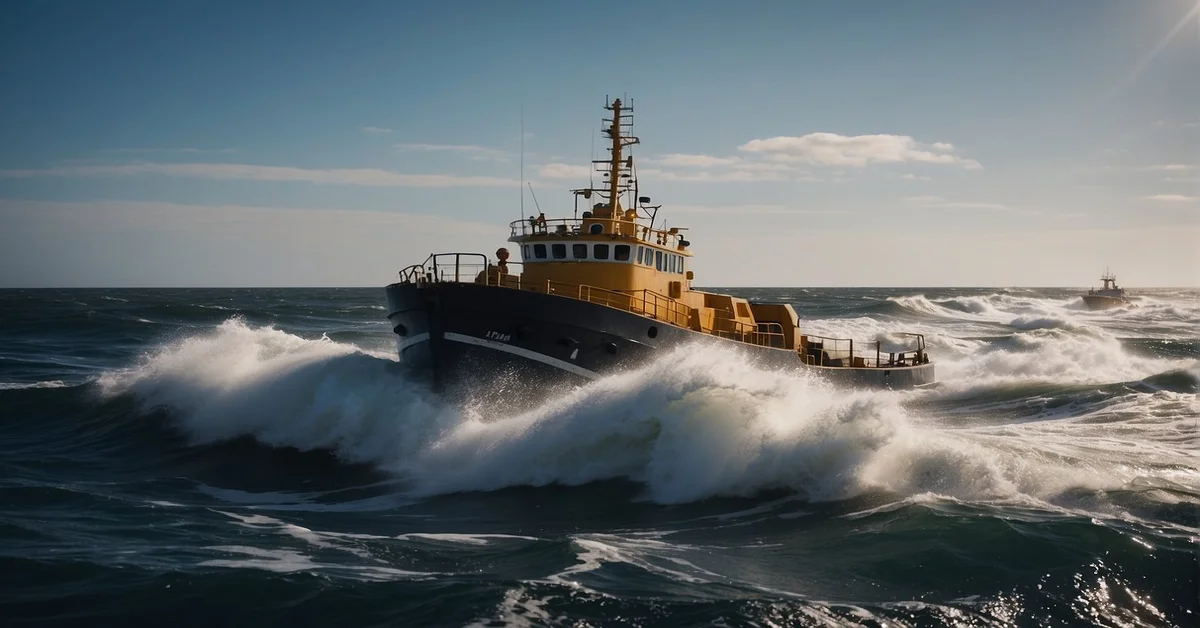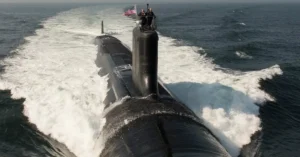Dive into the dynamic world of Tugboats where brawn meets agility in the maritime ballet of the seas. These compact powerhouses are pivotal to the dance of docking and undocking, weaving a tale of strength and strategy in every port.
Prepare to be captivated by the untold stories of tugboats as we chart a course through their incredible capabilities and historical voyages that have shaped the backbone of naval navigation.
Why are Tugboats so Important for Ships?
When I first started delving into maritime operations, I learned that tugboats are essential to the puzzle. These powerful little vessels play a critical role in the safety and efficiency of larger ships entering and exiting ports.
Maneuverability and Precision: Ships, especially the massive ones, can’t make sharp turns or navigate through congested ports independently. Here’s where a tugboat’s nimbleness comes in. Tugboats possess exceptional maneuverability and can perform precise movements necessary in ports.
Safety: The role of tugboats extends to safety measures as well. In unpredictable weather and emergencies, tugboats are the cavalry that comes to the rescue to maintain control over a ship’s movements.
- Firefighting: Equipped with firefighting gear, tugboats can first respond to any fire-related emergencies at sea.
- Pollution Control: Some tugboats specialize in containing and cleaning up pollution, preventing environmental hazards.
Power: Despite their size, tugboats are incredibly powerful. They use their strength to push or pull ships many times their size, benefiting from the physics behind water displacement.
Tugboats are indispensable to the shipping industry. They ensure that vessels reach their berths safely and help maintain order in the bustling aquatic highways of our harbors and ports. Without tugboats, the risk of accidents would increase, and the efficiency of maritime transport would significantly decrease.
Understanding Tugboats

When I think about the maritime industry, tugboats are among the first things that come to mind. They’re the mighty helpers that move massive vessels that can’t maneuver well in tight quarters. From harbors to the open sea, these boats are essential for the efficiency and safety of the maritime domain.
Historical Development
The history of tugboats is incredibly fascinating. Initially, tugboats started with modest steam engines, such as the Newcomen steam engine, to provide enough strength and power to tow larger vessels. One of the pioneers in this domain was Jonathan Hulls, who introduced the towing winch and paddle wheel propulsion in the 18th century.
Over time, tugboats evolved, integrating diesel engines and advanced hull designs, which greatly improved their maneuverability and bollard pull, a measure of their towing power.
Design and Propulsion
Tugboats boast diverse designs and propulsion systems, tailored to their roles. A conventional tugboat, typically small in size, utilizes a simple propulsion system such as a fixed propeller or more advanced systems like the Voith Schneider propeller or Kort nozzle for better direction control and stability.
The draft and hull design of a tugboat cater to the specific waterways it operates in, whether shallow rivers or the open ocean. Larger tugboats with more horsepower and complex machinery can even handle rougher conditions at sea.
Roles and Functions
The roles and functions of tugboats in the maritime industry are diverse and essential. They’re primarily known for their ability to push or tow barges, ships, and other vessels to their berths.
Specialized tugboats, such as harbor tugs, assist with docking. Tractor tugs offer exceptional maneuvering capabilities for large ships in congested ports, and oceangoing tugs are powerful enough for long-distance towing. Escort tugboats provide an additional layer of safety for the maneuvering of tankers through waterways.
Onboard, the crew members, including the captain, mate, and engineer, work together using navigation skills, winches, and towing lines to ensure the vessel’s safe handling and operation.
Tugboats, both small and powerful, are vital cogs in the maritime machine. They push the limits of what the industry can achieve in terms of maneuverability, efficiency, and safety.
Tugboats in Action

When exploring the vast topic of Tugboats Everything You Need to Know About, I find that their most dynamic role shines through in action. Whether it’s the precision of docking large vessels or the urgent emergency response, tugboats are maritime industry stalwarts.
Operating Environments
On any given day, tugboats perform critical tasks in various environments. Harbor tugs nimbly maneuver through congested harbors, assisting with docking and mooring operations. In berthing, they guide big ships safely to ports, ensuring smooth operations in these bustling maritime hubs.
Moving from packed ports to inland waterways, smaller tugboats can navigate narrow canals. They power through to tow dumb barges filled with goods, effortlessly transitioning between constricted waters and open areas.
But tugboats aren’t confined to close quarters. Oceangoing tugs venture into the open seas, where the waters are less forgiving. They often handle anchor handling for oil rigs or become sturdy ice breakers opening lanes for other watercraft.
Emergency Response
Tugboats are unsung heroes in emergencies, responding with speed and force. The responsive agility of Azimuth Stern Drive Tugboats (ASDs), also known as Z-Drives, allows them to swiftly move to a ship’s side, crucial in life-threatening situations on the water — a faster response can be the difference between life and death.
Salvage boats also play a crucial role in emergencies, specializing in salvage operations where vessels are distressed. Whether a sinking cruise ship or a grounded cargo vessel, these hardy tugboats spring into action, employing direct or indirect towing techniques to mitigate maritime disasters.
The prowess of tugboats in action underscores their importance in the maritime industry, showcasing their versatility across different scenarios, from routine duties to urgent emergency response.
FAQ – Tugboats

Many people wonder about tugboats’ purpose and strength and why even the largest vessels, like cruise ships, require their assistance. Let’s explore these common questions and provide clear answers.
What is the purpose of tugboats?
Tugboats serve a critical role in maritime operations. Their primary function is maneuvering other vessels by towing or pushing them in harbors, through narrow channels, or when docking and undocking.
Tugboats ensure safe passage where the larger ships cannot move independently, such as into designated berths at ports.
How are tugboats so strong?
Despite their relatively compact size, tugboats boast potent engines with a high thrust-to-tonnage ratio. This allows them to exert significant force when moving much larger vessels.
Their strength comes from specialized built-in systems like heavy-duty winches and reinforced hulls, contributing to their maneuverability and precision in tight spaces.
Why do cruise ships need tugboats?
Cruise ships are colossal and carry thousands of passengers, making safety a top priority. Tugboats assist cruise ships during docking, undocking, and navigating through congested or challenging waters.
Since maneuvering such large vessels often requires exact positioning, tugboats provide the necessary control and power.
This assistance is crucial during poor weather conditions or mechanical issues, contributing to a safer experience for the cruise ship and its passengers.
Set your thoughts in the comment sea below and steer the conversation with your unique insights on Tugboats. We’re all aboard and eager to hear your perspective!









